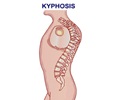World Osteoporosis Day 2008 endeavours to inspire the public to realise positive changes in healthcare policies in order to improve detection, treatment and prevention of osteoporosis.
October 20, 2008
World Osteoporosis Day (WOD) celebrated annually on October 20th, 2008, provides an opportunity to increase public awareness in order to prevent risks of osteoporosis.Despite yearly efforts, healthcare policies of many nations are yet to recognize ‘osteoporosis’ as a priority health issue. This apathy towards the condition directly impacts availability of resources for diagnosis and treatment. Further, many private and public health insurance schemes provide cover only after a fracture has occurred. With no form of reimbursement given for detection and treatment of osteoporosis, prior to a fracture, questions have been raised about the significance of this medical condition in the private and government healthcare policies, worldwide.
WOD 2008 will be witness to a two year extensive campaign, to marshal worldwide support necessary to influence positive changes to existing government and private healthcare policies. Through the theme of ‘Stand Tall - Speak Out for Your Bones’, the public is egged on to inspire positive changes in healthcare in order to improve detection, treatment and prevention of osteoporosis.
Get Talking About The ‘Silent Disease’
Osteoporosis, a chronic skeletal disease is caused by the progressive loss of bone density. Depletion of minerals, specifically calcium from the bones reduces the density of the bones, making them porous and brittle. This increases the propensity for fracture anywhere in the body. Bones at the wrist, spine and hip are especially prone to fractures.
Osteoporosis, dubbed as a ‘silent disease’ is known to strike silently and painlessly without clear cut symptoms; most patients are shocked to learn about the condition following an unexpected fracture. Therefore, awareness of risk factors of osteoporosis is paramount to prevention of the condition.
Why Action Is Imperative
More than 26 million people in India alone are battling osteoporosis; these numbers are expected to go up to 36 million by 2013. Further, as per forecasts, Asia will account for more than 50% of hip fractures in the world by 2050. |
• Alarmingly, Osteoporosis is a condition which strikes one in five men and one in three women worldwide.
• Osteoporosis is known to be a prominent cause of disability, pain and death among the older generation. This has resulted in increased healthcare expenditure, much more than cost of treatment of other chronic diseases. This is slated to go up threefold due to the ageing population.
• Close to 80% of those at high risk of osteoporosis, having suffered at least one fracture, have escaped diagnosis; hence treatment has also eluded them.
• Nearly 12 to 20% of hip fracture victims do not live beyond a year of the fracture.
Boning up
• 206 rigid bones make up the adult human body. Calcium, phosphorous, sodium, minerals, vitamins and collagen (a protein) constitutes the make-up of bones.
• Bones store calcium and make it available as per the body’s requirement. Accumulation of bone mass takes place from childhood till 30 years of age.
• Recommended Daily Allowance of Calcium for:
• Adolescent boy and girl – 1300 mg of calcium
• Ages19-50 – 1000 mg
• Above 50 (men and women) – 1200 mg
Women At High Risk
Women are born with a reduced bone mass as compared to men. After menopause, bone mass reduces further as there is a fall in the level of estrogen. Now, we know why 71% of osteoporosis related fractures occur in women.
Know The Osteoporosis Risks
In a nutshell, the risk factors of osteoporosis are:
• Heredity factors increase risk
• Deficiency in calcium intake during the growing up years
• Premature menopause and hysterectomy
• Lack of physical exercise
• Deficiency in estrogen levels
• Smoking and alcohol
• Presence of other medical conditions like Rheumatoid Arthritis, Hyperthyroidism and Type I diabetes.
Prevent Osteoporosis
Since maximum accumulation of bone mass takes place before 30 years of age, it is imperative to consume nutritive foods, especially those rich in Calcium and Vitamin D. Consistent weight bearing exercise in the growing up years is good to strengthen the bones, and prevent the onset of osteoporosis.
After the age of 30, it is important to prevent loss of bone density. To do so, one must make appropriate lifestyle and diet modifications
• Consumption of Vitamin D and Calcium supplements as per advice of medical specialists.
• Spruce up diet to include more protein and vitamins.
• Estrogen replacement therapy for post menopausal women.
• Undertake weight bearing exercise on a regular basis
• Reduce smoking and intake of alcohol
Apart from providing a wake up call to the national and private healthcare sectors, it is a reminder to each one to take stock of their bone health. Prevention of osteoporosis is undoubtedly a combined effort of individuals, government and private healthcare with each one taking responsibility for reducing its incidence.
Source-Medindia
SAVITHA/S













